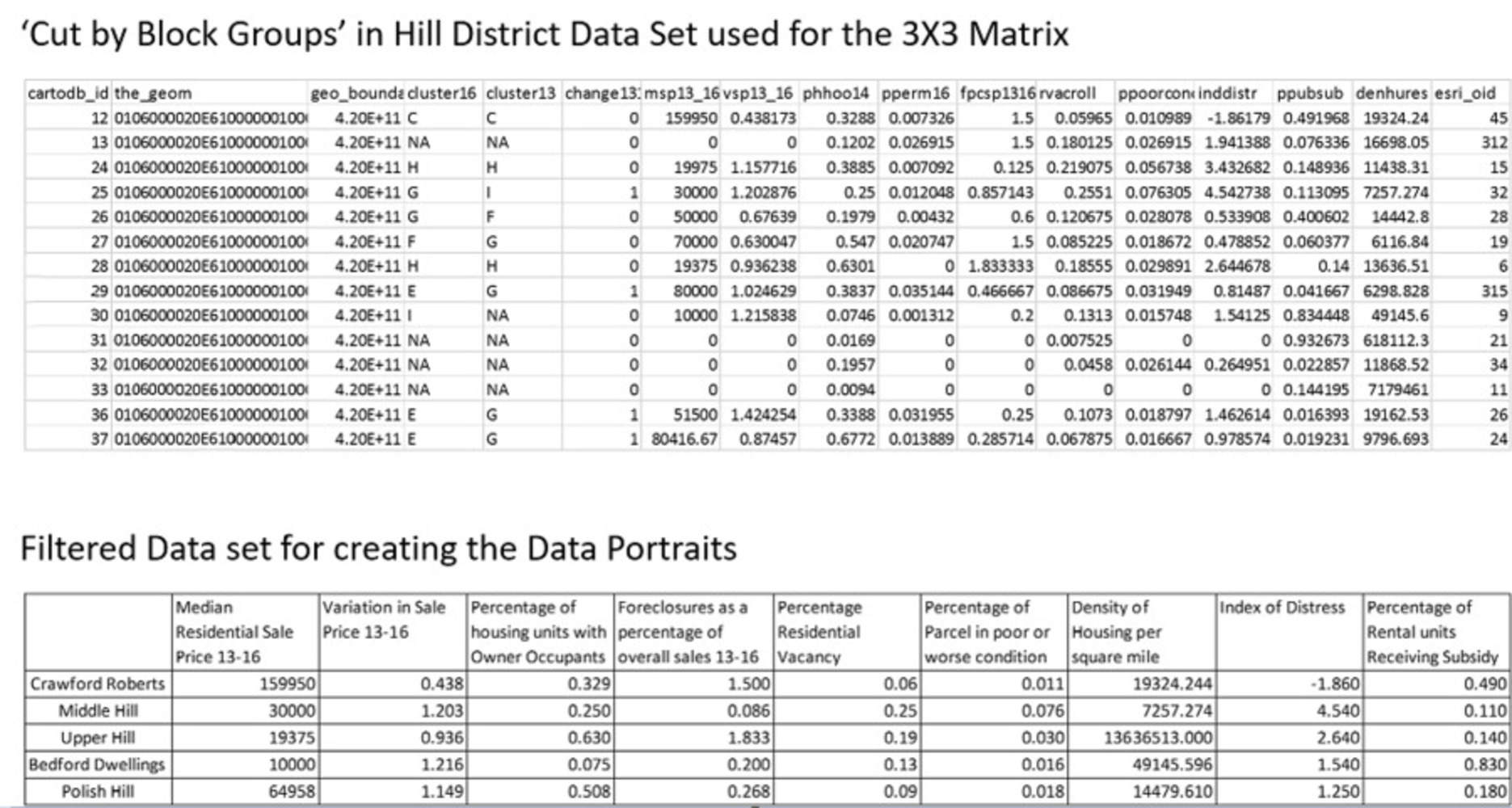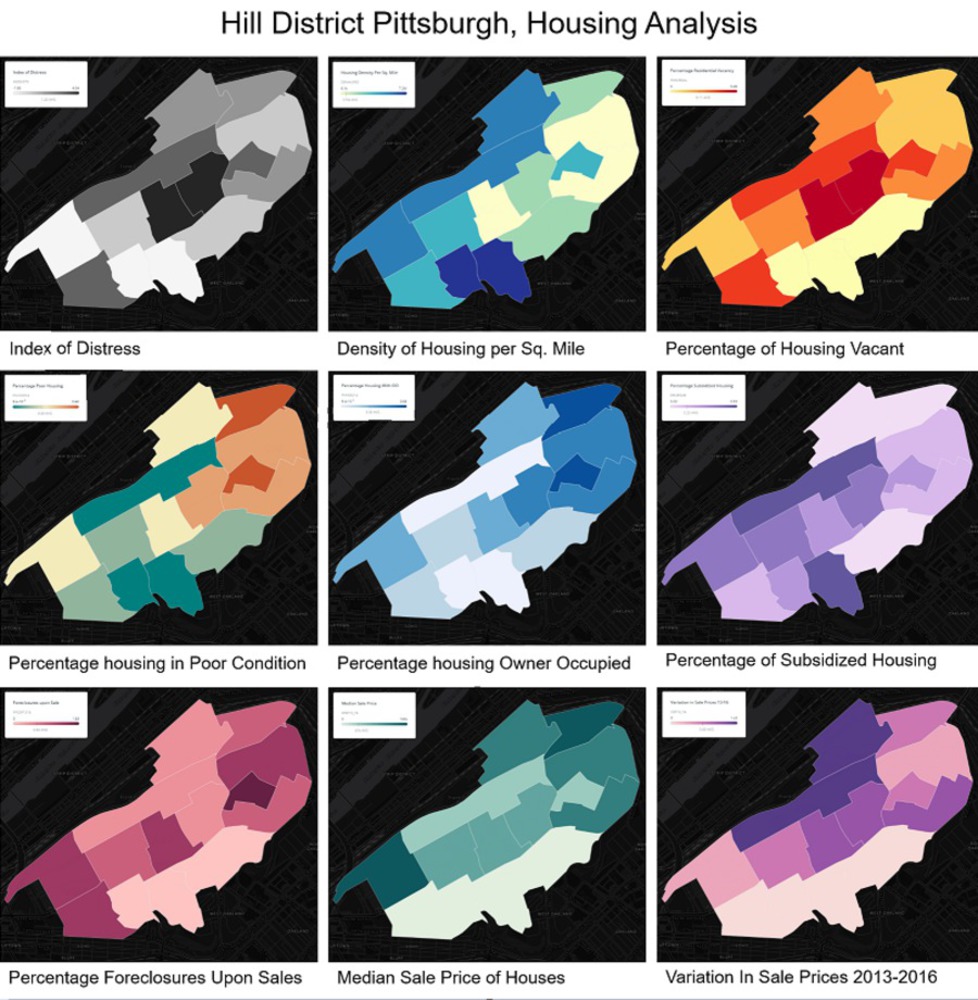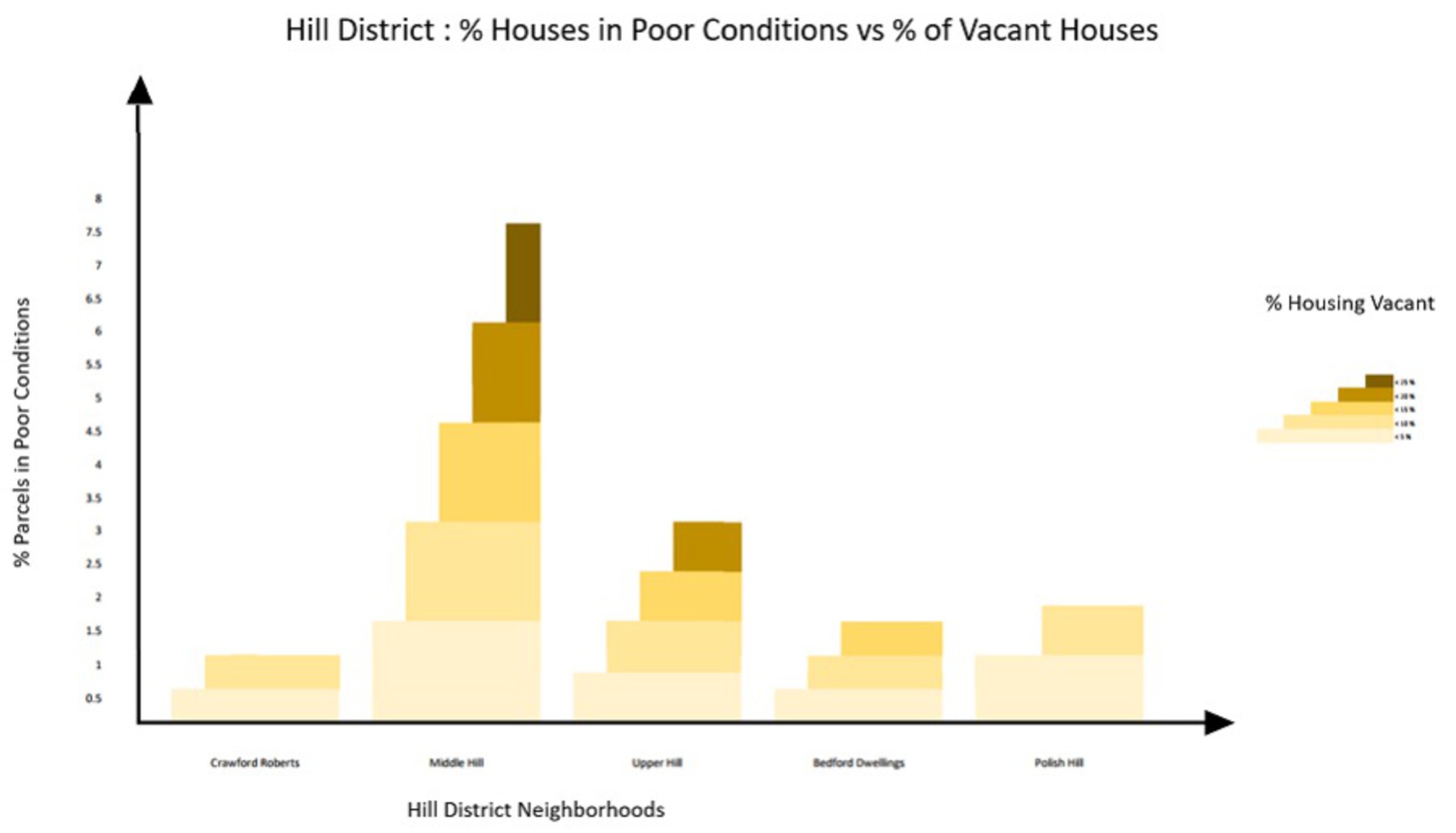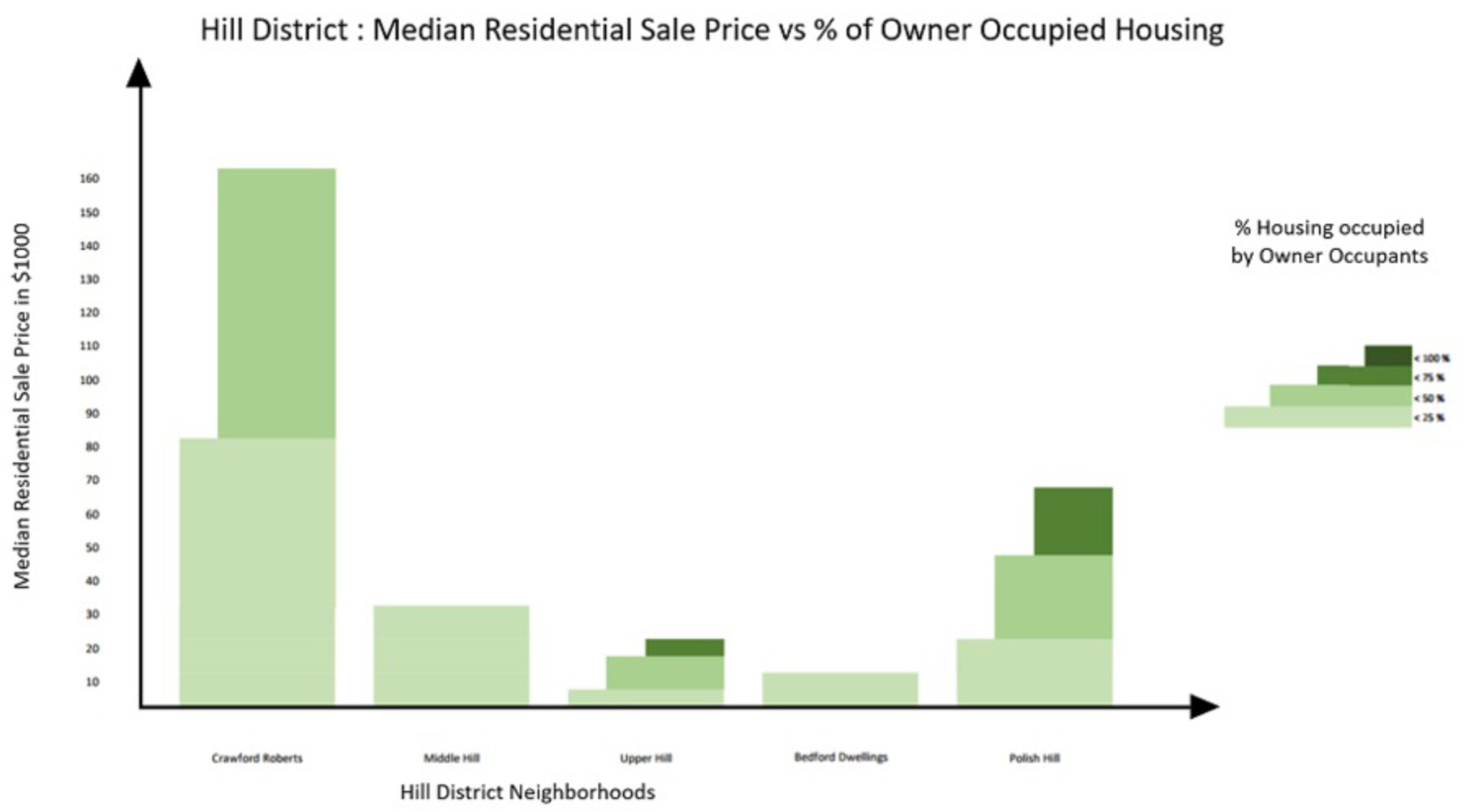The Story that ‘Raw’ data tells us about Hill District!
The United States of America has roughly 132 Million housing units on a total land area of 3.5 Million square miles. This gives a housing density of 37.3 houses per square mile of land area.
We compare this data with the Hill District, Pittsburgh which is taken to be comprised of 5 neighborhoods; Polish Hill, Upper Hill, Middle Hill, Bedford Dwellings & Crawford Roberts. The Hill district has a vacancy rate of 6%-25%, compared to the city rate of 7.7%. This brings out the fact that even with an above median number of houses per unit area, there is a high vacancy rate. This data suggests shortcomings in the housing sectors in the area.
Pennsylvania has a house density of 124 and Pittsburgh has a house density of 5,521 houses per square mile. The Hill district located has a house density of 7,250 to 19,320 making it a very densely populated residential area putting it at least 35% above city median. This gives us a brief idea about how important the housing data is for this part of the city and how big an impact a successful housing analysis would create.
These can be attributed to the high concentration of houses with poor conditions (as defined by Allegheny County). The census data puts the percentage of housing in poor conditions at 5%. This translates to 500 houses per mile in poor conditions. That is a lot of housing and based on average household size could house at least an additional 1250 residents per square mile.
These problems in turn have an effect on the prices of houses in the area. As a result, the median residential sale price of a house in the area is $56,500 even as cost of new construction exceeds $100,000. The area also has an unusually high percentage of foreclosures for each sale recorded.




